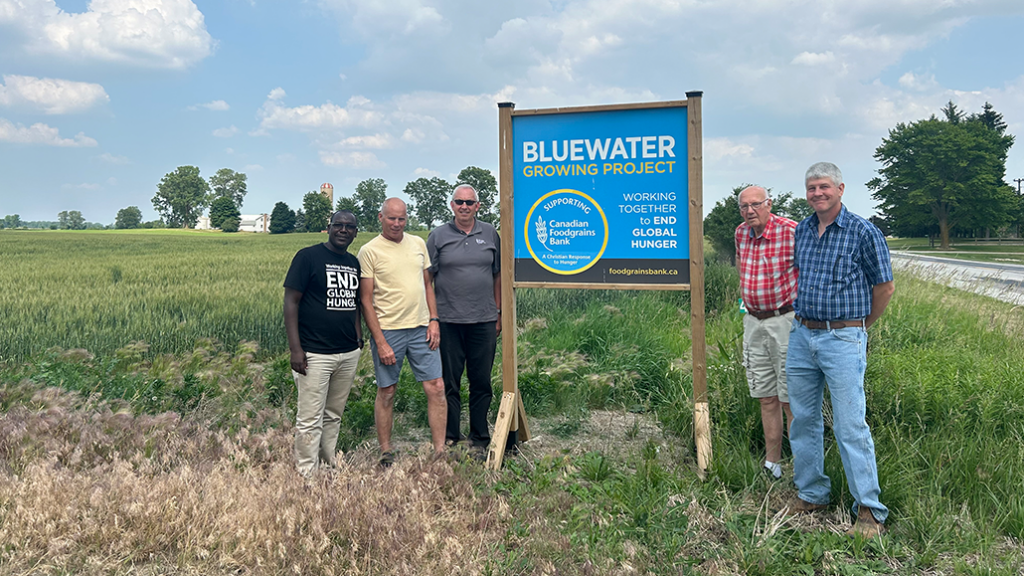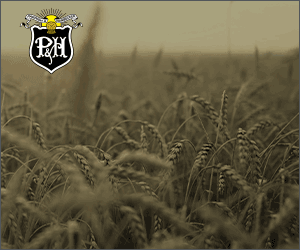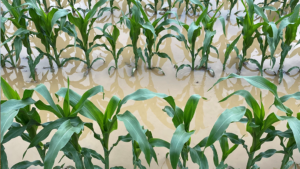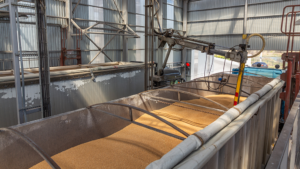Farming for world hunger
CANADIAN FOODGRAINS BANK CELEBRATES 40 YEARS

WORKING TOGETHER TO end global hunger has been the mission driving a national charity for the last four decades. While food security remains a major issue around the world today, there is no doubt that the organization is making a significant impact.
The Canadian Foodgrains Bank — which began when Canadian farmers wanted to share the abundance of their harvest with those facing hunger — has supported over 32 million people in 80 countries.
With a membership of 15 Christian churches and church-based agencies, the Foodgrains Bank operates by raising Canadian funds and partnering with locally-based organizations in developing countries.
“One of the greatest strengths is working with the partners because they are on the ground in the developing countries,” explains Henry Reinders, Ontario and Quebec regional representative. “They know the situation, know about the context and are able to identify the needs and work with our members to address it.”
RESPONDING TO HUNGER
The two types of Foodgrains Bank projects focus on providing emergency food assistance and facilitating long-term response work.
Depending on the situation, assistance can come in the form of food rations, store vouchers, or cash being distributed directly to the people who need it. The donated funds for food assistance are eligible for a 4:1 match from the Government of Canada.
Reinders shares that a lot of the organization’s long-term response work is based on teaching farmers how to improve their operations to increase production. Since many farmers in the project areas experience drought and unpredictable weather, teaching conservation practices has become very important.
“I continually hear stories about people who improve their crop production by 600 to 1,000 per cent by implementing what they have learned,” he says. “It can be a significant increase that allows people to become food secure and allows them to sell in the market, which gives them funding they can use to send their children for further education.”
GROWING PROJECTS
While the Foodgrains Bank collects donations from individual and corporate donors and receives grant revenue, farmers can continue the vision of the founders and support the charity in a unique way.
Growing projects, where a farmer or group of farmers plant, grow, and harvest a crop and donate the proceeds, are active in nine provinces.
Reinders explains that a common misconception is that the program requires Canadian farmers to ship their commodities overseas. While this was done in the organization’s early days, participating farmers today sell their crops on the Canadian market and make a cash donation to the Foodgrains Bank.
He says there are about 100 projects in Ontario that involve a variety of crops growing on anywhere from two to 300 acres. Since the first growing project in the province started in 1989 and efforts expanded in the early 1990s, some farmers have been involved for more than 30 years.
The team behind the Bluewater Growing Project is one example. While the number of participants and size of the project has varied over time, there has been a group of farmers near Sarnia committed to the Foodgrains Bank from the start.
Today, the project is run by a committee of people who work together towards the common goal of a year-end donation. Thanks to the availability of rental acres, the initiative doubled in size in 2022. They are currently farming about 300 acres across 10 different sites.
“Some people take part of their field and donate the proceeds from it, and we also have some people that own land and donate or rent it to us,” explains Jack Koetsier, who has coordinated the Bluewater Growing Project for the last 10 years.
Guided by a local agronomist who donates their time, the group makes growing decisions together and shares the workload throughout the season. Local input suppliers donate seed, and individuals, businesses and churches donate financially towards production costs.
“Our family got involved because we’ve been blessed over the years, and we want to give back to others,” says Koetsier. “We know the need is incredible around the world, and the Foodgrains Bank is a really good vehicle to get help where it needs to go.”
Taking a group approach has also become a lot of fun. Koetsier remembers a day last fall when farmers of all ages got together to combine corn. There were three combines, three buggies, and six or eight people driving wagons to the elevator, and everyone commented on how much they enjoyed themselves, he says.
Larry Dyck, who farms near Campden, takes a different approach. Together with his wife, son, and daughter-in-law, he currently coordinates three projects that total 85 acres.
Two of the projects receive donations through local churches, and the third follows a unique model that started in Manitoba — a subscription program where people can sponsor an acre. The subscription project, called Grow Hope Niagara, is located on land that the owner donates.
“I never want to communicate that the size of the donation matters because whether people donate $10 or $50, the contributions make a huge difference,” says Dyck.
All of the funds received contribute to the costs of production. The remainder of the costs are covered by Dyck’s operation, and if there happens to be a surplus in donations, those funds are added to the crop proceeds and donated directly.
Like Koetsier, Dyck is passionate about supporting the Foodgrains Bank.
“We have the privilege of living in a place with a stable government and secure banking systems, and the people we are helping don’t,” he says. “My family has never not eaten or not been able to pay bills, so we look at the math a little differently on those acres and help others who are in a very different life situation.”
Farmers across Canada also have the opportunity to make a donation through grain elevators.
In recent years, community projects have also become a popular way to raise funds. These projects give people a variety of ways to donate and promote the Foodgrains Bank within their community. The initiatives range from recycling drives to fundraising dinners.
In 2022, over $2.7 million was donated through growing and community projects in Ontario. To learn more, visit www.foodgrainsbank.ca. •










